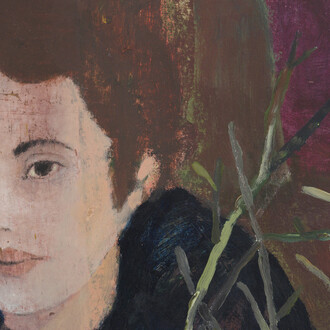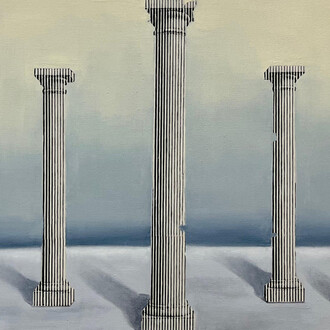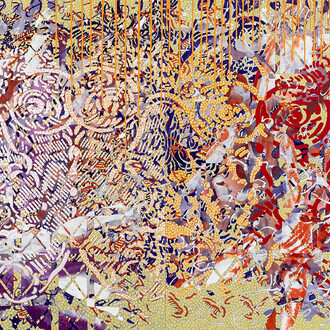Mennour presents its first exhibition devoted to the last period of the work of Gaston Chaissac (1910-1964), an “outsider” artist positioned between modern and contemporary art, who claimed to be an “artist, poet and farmer”.
To the category “art brut” in which his works have too easily been included due to their candid spontaneity, simple shapes and bright colours, Chaissac preferred the term “modern rustic painting”. At the end of the Second World War, this “village painter” definitely positioned himself against a Parisian art scene deemed too intellectual and cut from a formal freedom that only life in the “unpopulated countryside” allowed. It was therefore sheltered from the centre that Chaissac’s work developed, at the same time on the fringes and in the recognition of his peers. For Otto Freundlich, who opened the doors to his Parisian studio in 1937 and encouraged him, with his wife Jeanne Kosnick-Kloss, to paint: “a master is born.” Jean Dubuffet tried in vain to include him in his definition of “art brut” and the artist couple of Albert Gleizes and Juliette Roche supported him. Though he was celebrated by an avant-garde community, he became famous quite late in his life as his body of work was different from that of the artists of his time.
Chaissac worked at breaking the virtuoso gesture of the painter, choosing instead a kind of assumed clumsiness: the outlines are not steady, delimiting flat surfaces of colour more or less irregular. From those geometrical shapes, smiling faces emerge, heads without bodies and without gender, indistinct human figures which are reminiscent of children drawings, and their abilities to make perceptible, in a few lines, primary emotions like joy and pleasure. His paintings seem to stem from some abstraction through a play on the shapes he creates, in painting and in collages of painted paper, until a face appears—more rarely fragments of a body—like that phenomenon of pareidolia that seems to show something familiar in random shapes.
His paintings seem to stem from some abstraction through a play on the shapes he creates, in painting and in collages of painted paper, until a face appears—more rarely fragments of a body—like that phenomenon of pareidolia that seems to show something familiar in random shapes.
The anthropomorphism of Chaissac’s works looms in his paintings but also on his masks and totems, made with a joyful makeshift assemblage of wood planks on bits of salvaged iron or flattened tin buckets on which he paints; humble materials taken from the world of rural craftmanship and which maintain the traces of a previous use, with its accidents and its dents. In this manner of representing humanity with a formal economy of means one could call childish or with a rustic form of poetry, Chaissac constructs a modern mythology peopled with eccentric figures. Like Chaissac’s, the works of Petrit Halilaj, Camille Henrot and Matthew Lutz-Kinoy—three of the gallery artists for whom childhood and the human condition are essential sources of inspiration—actuate, as a counterpoint, his extraordinary modernity.
(Text by Christian Alandete, curator of the exhibition)
















